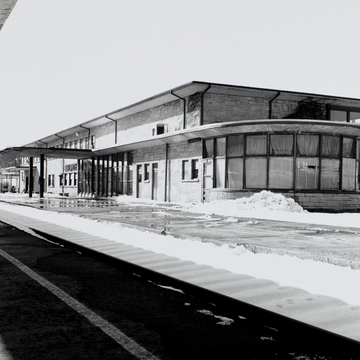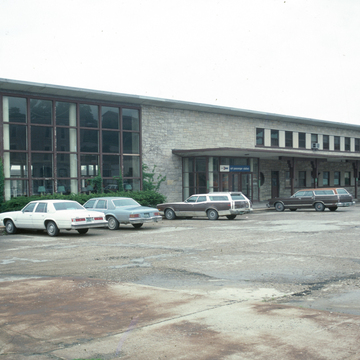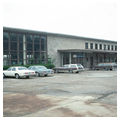Because of the importance of the Burlington Railroad within the national railway system, the new station was allowed to be built during World War II. The structure of the station was reinforced concrete, sheathed in stone. The limitation of materials available at the time partially explains its design. The building was planned as a combined railroad and bus station, its most important spaces being a large waiting room and an adjoining restaurant. The lobby was designed as a comfortable, living-room-like space with both movable and built-in furniture. The restaurant had a C-shaped low counter, paralleled by seating. The design of the station was essentially Streamline Moderne, but Streamline Moderne working its way into post-World War II Modern. The restaurant wing has a dramatic curved facade, à la Eric Mendelsohn, the German modernist of the 1920s and later; other Moderne elements are the horizontal band windows and the enlarged porthole windows. The great Chicago firm of Holabird and Root designed a number of small railroad stations in Iowa in the late 1930s; in Burlington itself, in 1938–1939, they also designed the James S. Schramm house ( ME050).
You are here
Burlington Railroad Passenger Station
If SAH Archipedia has been useful to you, please consider supporting it.
SAH Archipedia tells the story of the United States through its buildings, landscapes, and cities. This freely available resource empowers the public with authoritative knowledge that deepens their understanding and appreciation of the built environment. But the Society of Architectural Historians, which created SAH Archipedia with University of Virginia Press, needs your support to maintain the high-caliber research, writing, photography, cartography, editing, design, and programming that make SAH Archipedia a trusted online resource available to all who value the history of place, heritage tourism, and learning.

















